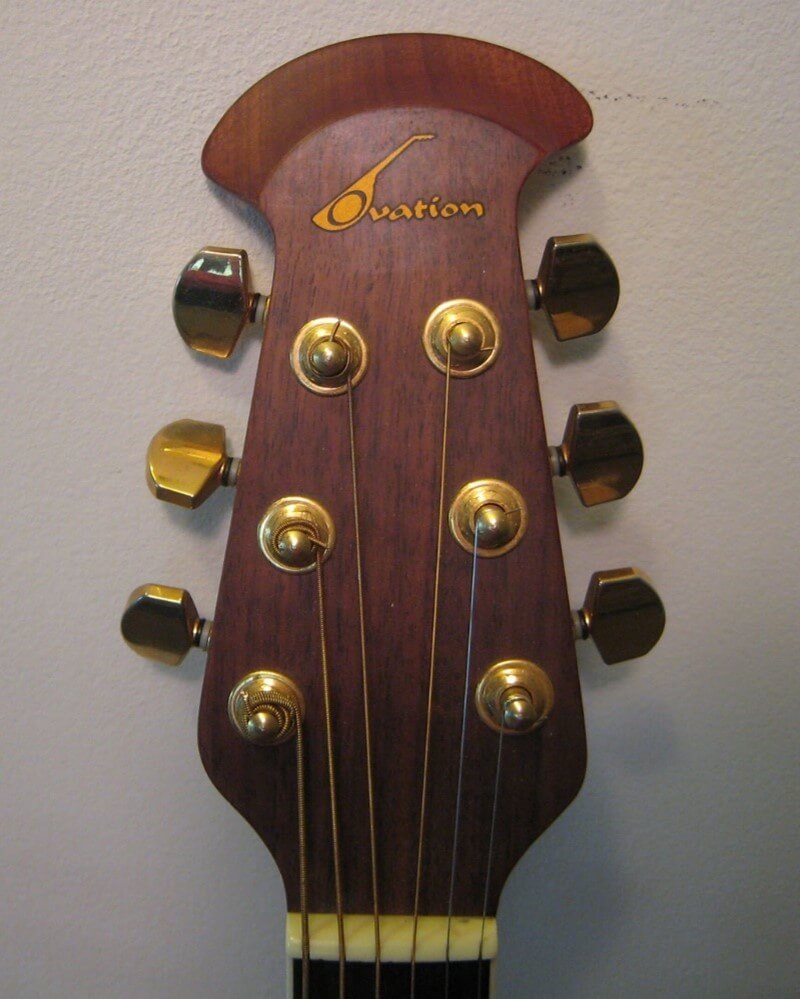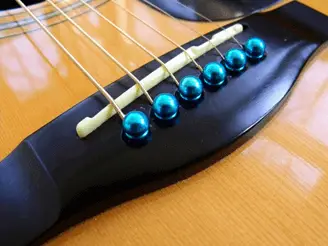Breaking a guitar string can be a very frustrating experience, especially for beginner guitarists. Even for experienced guitar players, breaking a string at the wrong time — such as before a gig or during a performance — can be disastrous. That is if they don’t know how to fix a broken guitar string!
To fix string in acoustic guitar First, you need to remove the end of the string attached to the headstock, turn the tuning pegs in the given direction, remove the string from the bridge by pushing on it and keeping it pressed, and can be removed by pulling it out. In electric guitar open the panel with head screwdriver, push the string, remove it and install new one.
In this article, we’ll discuss factors that can cause your strings to break, whether it’s possible to repair a broken guitar string, the process for replacing guitar strings, and how this process can differ for different acoustic and electric guitars.
By the end of this article, you should be able to easily fix your broken guitar strings and have this extremely frustrating process become just a minor inconvenience!
Contents
What Causes A Guitar String To Break?
Guitar strings break due to tension; each string has a limit to how much it can bend or push until it finally snaps.
Strings naturally wear out because of your everyday guitar playing. The older your strings are, the likelier they are to break — all those little bends, slides, and strums eventually add up! However, some factors can speed up this process.
Humidity, for example, can also cause your strings to wear out much faster and be more susceptible to breakage! Moisture in the air can cause your strings to rust, which weakens the strings — eventually causing them to break when you play them.
The same principle applies to water. Moisture from sweat, damp storage areas, or wet hands can also cause your strings to rust.
Similarly, tuning your guitar to notes higher than standard tuning can also cause the tension on the strings to increase significantly, making strings likely to snap during tuning or playing.
Regardless of the reason, it can be really frustrating to break a guitar string. Let’s look at what options you have in case you have the unpleasant experience of breaking a guitar string!
How To Fix A Broken Guitar String Without Buying A New One?
Unfortunately, that’s not possible. Once you’ve broken a string, it’s practically useless.
Technically speaking, you can try soldering it; however, it’s unlikely to work. A soldered guitar string will not be strong enough and will break as soon as you put some tension on it.
How Much Does A New Guitar String Cost?
You can easily find replacement guitar string sets, as well as individual guitar strings, at any local music store or online.
These guitar strings are available for as cheap as $1! You can also get an entire string set for $8-15!
In most cases, you can also ask the person at the music store to replace the strings for you at no additional charge.
However, if you order online, or can’t have your string(s) replaced at the store, you can easily do it yourself by following the instructions detailed below!
How To Fix A Broken Acoustic Guitar String?
Because of differences in their structure, the process of changing strings on an acoustic guitar differs from that of electric guitars.
But don’t worry — we’re going to cover both in this article.
How To Remove A Broken Acoustic Guitar String?
Before you can install a new string on your guitar, you need to first remove the old, broken string.
A string is attached to the guitar at two points — the headstock and the bridge.
The headstock is the top part of the guitar, where your tuning pegs are placed. The bridge is the point where the strings are “entering” the guitar body — right next to the soundhole.

First, you need to remove the end of the string attached to the headstock.
You can do this by turning the tuning pegs clockwise (or whichever direction loosens the string). You can do this using your hand or a string winder to save time. Keep at it until the string comes off of the string post and then take it out of the small hole in the string post.
Next, you need to remove the string from the bridge.

The bridge pins hold this end of the string in place. Each pin keeps one string fixed in place by pushing on it and keeping it pressed, and can be removed by pulling it out.
Simply find the bridge pin that is holding the broken string in place and pull on it with your fingers. However, most times, the pins are held tightly in place and you might need some pliers to pull it out. Be careful not to apply too much force or the pins may get damaged during the removal process.
Once the pin is out, just pull this end of the string from the pinhole. Make sure you don’t lose the bridge pin, as you’ll need it to fix the new string in place!
Tie up your old string before disposing of it to avoid accidentally hurting someone with the sharp ends of it!
How To Install a New String On An Acoustic Guitar?
Now, take your new guitar string and insert the end with the small circular nut inside the bridge pinhole. Insert the bridge pin and press on it with your finger until it’s fixed into place.
Now take the other end of the string, pass it over the appropriate slot on the nut, and insert it into the string post. Pull the string from the end coming off the string post while holding the string in place on the nut using your thumb.
Slowly start turning the tuning peg counterclockwise to wind the string around the string post, keeping your thumb pressed on the nut. Continue turning the tuning peg until the string is firmly in place.
Attach your tuner and tune the string. You may have to tune several times before the string can retain tuning. The string might also “slip” from the string post a few times while you’re tuning. That’s nothing to worry about — just re-tune the string until it stops slipping.
Take a wire cutter and cut off the excess string attached that’s poking out from the string post, and you’re good to go!
How To Fix A Broken Electric Guitar String?
The process for removing and changing the strings of an electric guitar is similar to that of an acoustic, but some steps can be different — depending on your guitar.
How To Remove An Electric Guitar String?
The process for removing the broken string from the headstock is pretty much the same as with acoustic guitars.
Removing the string from the bridge, however, is an entirely different process, depending on the make and model of your guitar.
In the case that you have a fender guitar, take a small Phillips head screwdriver and open the panel on the back of your guitar.
Once you’ve opened the back panel, push the string you want to remove from the front side of the guitar. Sometimes the string may get stuck and might not come out of the back by just pushing it. Just take a small needle or a pin, insert it into the string slot from the front of the guitar, and use it to push the string out.
If you have a Gibson guitar, you most probably don’t need to open a back panel and can simply remove the string by pushing it out from its slot on the front of the guitar.
How To Install A New String On An Electric Guitar?
In the case you have a fender electric guitar, insert the end of the string that doesn’t have the circular nut into the slot on the back panel of the guitar. This should be the slot from where you just removed the broken string.
Pull the string from the front of the guitar until the circular nut jams the string into place. Feed the string through the string post on the headstock of the guitar and wind the string, the same as you would for an acoustic guitar.
For most Gibson electric guitars, just pass the string through the appropriate string slot on the bridge of the guitar until it’s jammed into place and feed the string through the string post.
Conclusion
Fixing your guitar strings is a pretty straightforward process that you can easily do with the tools you would have available at home.
In the case you break only one string, it may be a good idea to replace the entire string set. For one, this helps to keep the sound of your guitar consistent. Having five old strings and one new string can often result in the newer string sounding a lot “brighter” than the older strings, creating an imbalanced sound.
Similarly, this also helps avoid gauge mismatches between your strings, in case you aren’t aware of the gauge of your strings. Having strings of a mixed gauge can also make your guitar sound imbalanced and may even affect how the strings feel on your fingers.
Either way, changing the entire string set is just changing all the strings individually, something that you should now be able to do with ease! Hope this article will help you to understand how to fix broken guitar strings.